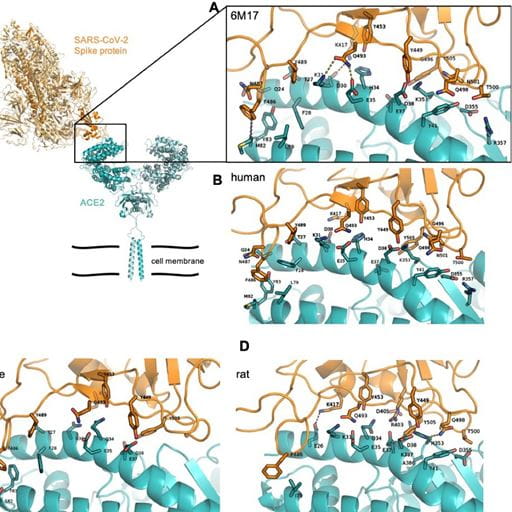Research shows best models to test possible COVID-19 therapies
-
Date
Tue 29 Sep 20

Essex scientists have identified how COVID-19 impacts on different species, which could help future research into developing therapies to treat the disease.
Researchers around the world are working against the clock to try and develop a vaccine or treatment options for COVID-19. As part of that work they need to identify the best potential models to test and develop therapies to treat the disease.
In a study published in the journal Scientific Reports, scientists from the University of Essex’s School of Life Sciences analysed the proteins the virus uses to enter lung cells – known as ACE2, TMPRSS2 and Furin – and compared these across different animals models.
The results revealed why some animals, including humans, are more strongly infected by the virus compared to others and, more importantly, discovered which animal models look most like the human ones, making them the most suitable models for future research into developing therapies and vaccines.
At Essex, Dr Greg Brooke and Dr Filippo Prischi usually lead research groups focusing on developing new treatment options for cancer. However, they have recently turned their attention to COVID-19 to use their expertise and skills developed in the cancer field in the global fight against this virus.
“Our research involved looking at how the virus interacts with proteins present on the surface of our lung cells,” explained Dr Brooke. “Of the animals that we investigated, we found that the most similar model to humans was the macaque, ferret and hamster. These animals could therefore be useful models for researchers looking into COVID-19 therapies as the molecular mechanism is so similar to humans.”
Dr Filippo Prischi added: “Despite the urgent need to find effective therapies, research into COVID-19 has been affected by a lack of suitable animal models. By identifying these species as the most suitable models for studying this disease, our research is important to the scientific community’s future research aiming to develop therapies and vaccines.”
.jpg?mh=500&mw=500&hash=6568B6C9CCF5290A596BEF6678B6AD0E)



